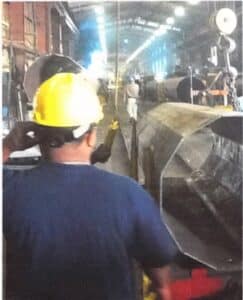Welder Shortage Facts
From Red-D-Arc:
 “The manufacturing skills gap in the U.S. could result in 2.1 million unfilled jobs by 2030, according to a new study by Deloitte and The Manufacturing Institute. The cost of those missing jobs could potentially total $1 trillion in 2030 alone. Because welding is an essential part of manufacturing, many concerns are focused on the welding industry, which has been facing a shortage of workers for several years. The American Welding Society, an organization supporting the welding industry and its workers, predicts that the country’s workforce will need 400,000 welders by 2024. Along with machinists, carpenters, and other trades people, the versatile, skilled welder who can handle several welding methods has suddenly become a scarce commodity. The demand for skilled welders has been outpacing the supply and continues unabated, leaving many wondering what happened.
“The manufacturing skills gap in the U.S. could result in 2.1 million unfilled jobs by 2030, according to a new study by Deloitte and The Manufacturing Institute. The cost of those missing jobs could potentially total $1 trillion in 2030 alone. Because welding is an essential part of manufacturing, many concerns are focused on the welding industry, which has been facing a shortage of workers for several years. The American Welding Society, an organization supporting the welding industry and its workers, predicts that the country’s workforce will need 400,000 welders by 2024. Along with machinists, carpenters, and other trades people, the versatile, skilled welder who can handle several welding methods has suddenly become a scarce commodity. The demand for skilled welders has been outpacing the supply and continues unabated, leaving many wondering what happened.
From the American Welding Society:
“The welding industry will face a shortage of about 400,000 welders by 2024, according to the American Welding Society. The average age of a welder is 55 and the coming wave of retirements will leave the US with a great deficit in skilled welders in the work force. According to 2012 data from the National Center for Education Statistics, the national jobless rate for 16- to 24-year-olds is 14.4 percent, which leaves young welders at a great advantage in comparison to their counterparts. Manufacturing has grown faster than the rest of the U.S. economy since the recession. In a recent article from Bloomberg business, Gardner Carrick, was quoted saying, “For 20 years we stopped feeding young people into the trades, and now we’re scrambling to catch up” Because of this great welder shortage, welding will certainly a viable career choice for years to come with many job opportunities for those entering the field. “
In the last few months, the best estimates are that we are presently down approximately 50,000 welders nationally, and the shortfall is projected to increase dramatically because of an aging workforce.

